
This short and sweet 5E lesson helps students explain the role of gravity in the formation of the solar system and in orbital motion (6.2c).
- Subject:
- Earth and Space Systems
- Material Type:
- Lesson
- Author:
- Melissa Bills
- Date Added:
- 03/11/2021

This short and sweet 5E lesson helps students explain the role of gravity in the formation of the solar system and in orbital motion (6.2c).
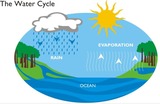
This 5E lesson begins with an Engage activity that assesses prior knowledge of water cycle from elementary school. It is followed by an Explore activity where students observe a teacher demonstrating the water cycle in a bowl and gather information based on their observations. It continues with an Explain where students have the opportunity to explain what they understand on the water cycle with an emphasis of phase changes. In the evaluate stage, students apply their knowledge of solids and liquids to classfiy various forms of precipitation. .
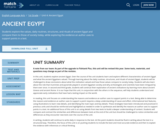
In this unit, students explore ancient Egypt. Over the course of the unit students learn and explore different characteristics of ancient Egypt and what the ancient Egyptians valued. Through learning about the daily routines, structures, and rituals of ancient Egypt, students will be challenged to draw conclusions about what the civilization valued and how those values compare to society today. Students will also learn about the role that mummies and pyramids played in ancient Egyptian society and why archeologists and scientists have been intrigued by them ever since. In second and third grade, students will continue their exploration of ancient civilizations by learning more about ancient Greece and ancient Rome. It is our hope that this unit, in conjunction with the others in the sequence, will help students understand and appreciate early civilizations that have had a lasting impact on the world.
In reading, this unit focuses on understanding the reasons and evidence an author uses to support points in a text. Being able to determine the reasons and evidence an author uses to support a point requires a deep understanding of cause and effect, informational text features, using illustrations to learn new details, and identifying the main topic and key details. These strategies have been introduced and practiced in previous units and should be reinforced and highlighted as needed in order to synthesize and identify the reasons an author uses to support points in a text. An additional focus of this unit is on using details from two texts to build a deeper understanding of content. Students will compare and contrast the similarities and differences between texts at the end of the unit but should be challenged to notice similarities and differences as they encounter new texts over the course of the unit.
In writing, students will continue to write daily in response to the text. At this point students should be fluid in writing about the text in a structured way. Therefore, the focus of this unit is on pushing students to include the best and most accurate evidence and then to explain the evidence with inferences or critical thinking.

In this science-based unit, students begin their exploration of animals and animal adaptations. Using next generation science standards as a guide, students explore three main topics: how different animals use their body parts and senses in different ways in order to survive, the ways in which the behavior of different animal parents and offspring help the offspring survive, and the similarities and differences among individual animals of the same kind. This unit is part of a larger progression on understanding animals and the animal kingdom. In kindergarten, students learn about how animals meet their basic needs for survival and how that varies depending on the season. In second grade, students learn about different habitats and how animals in the habitat rely on the environment for survival. Then in third grade, students study animal adaptations and the different ways animals adapt in order to survive, especially when threatened by environmental changes. It is our hope that this unit, in combination with others in the sequence, will help students develop a deeper understanding of the animal kingdom and life science.
This unit includes a mix of read-aloud texts and shared-reading texts. Students will focus on different skills depending on the method in which the text is consumed. During read aloud, students will refine their skills in describing the connection between ideas and pieces of information, figuring out the meaning of unknown words, distinguishing between information provided by the pictures and information in the text, and identifying the reasons an author gives to support points in a text. During shared reading, students will predominately focus on identifying the main topic of a section of a text, retelling key details that match the main topic, and using text features to locate key facts and information. Because the shared reading days are meant to be student driven, not teacher driven, the target tasks are at a more accessible, independent level for students. There are also not a lot of key questions already planned for shared reading days. Questions should be written and spiraled in based on student needs and student reading levels.
In writing, this unit builds on the work students did in unit one. Students will continue to write daily in response to the text, with a focus on correctly answering questions and adding an inference or critical thinking.
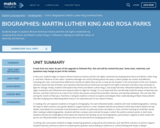
In this unit, students begin to explore African-American history and the civil rights movement by studying Rosa Parks and Martin Luther King Jr. and their influence on the nation. Students will begin the unit by thinking about the ways in which people are similar and different, including skin color, and how those differences should not define who we are or how we are treated. In the second part of the unit, students will learn about the discrimination and injustices faced by African-Americans during the civil rights movement and why it was necessary to fight for change. Finally, students will explore Rosa Parks and Martin Luther King Jr. and study how their influential leadership drove the civil rights movement and influenced and inspired others to fight for change. It is our hope that this unit will help instill the values of diversity and fairness, and that it will serve as a launch for further discussions around discrimination, fairness, and valuing individuals. This unit also falls during the month of February. Therefore, it will give students a chance to explore and deepen their understanding of Black History Month and why studying and celebrating black history is an important part of our nation's history.
In reading, this unit exposes students to the genre of biography. For each influential leader, students will read multiple biographies, noticing the ways in which authors use specific details to support points in a text. Students will also be pushed to think about which details are key details, how details are connected, how illustrations connect to particular points and ideas in a text, and the meaning of unfamiliar words. After reading multiple biographies, students will then compare and contrast the ways in which the authors present points in both texts. Students will also be challenged to think about the themes that develop across the biographies, particularly in regards to what makes the person an influential leader and the lessons that can be learned from studying each person.
In writing, this unit pushes students to begin answering questions using words and sentences, and, therefore, rely less on picture support. Students will also continue to work on answering the question and including an inference or critical thinking that shows a deeper understanding of the text. At this point, all structure focus correction areas should be taught; therefore, the focus of this unit should be on providing individualized feedback to students who are not at a 3 or 4 on the rubric.
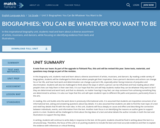
In this biography unit, students read and learn about a diverse assortment of artists, musicians, and dancers. By reading a wide variety of biographies, students will be challenged to think about where people get their inspiration, how a person's decisions and actions can change his or her life, and how hard work and determination can change a person's life, especially when facing instances of prejudice and discrimination. Students will also be challenged to think about the ways in which a person can be influential and how reading about other people's lives can help them in their own lives. It is our hope that this unit will help students realize they can be whatever they want to be if they are determined and work hard, and that no obstacle, no matter how big it may feel, can stop someone from achieving something they are determined to achieve. It is also our hope that this unit will open students' eyes to different life paths and passions, particularly those in the arts.
In reading, this unit builds onto the work done in previously informational units. It is assumed that students are inquisitive consumers of an informational text, asking and answering questions about key details. It is also assumed that students are able to find the main topic of a text and retell key details that fit with the main idea. In this unit, students will focus deeply on cause and effect and describing the connection between individuals, events, and information from the text. Another main focus is on identifying the reasons an author gives to support points in a text. Students will be challenged to think about the big ideas of a text and what details the author includes in both the text and illustrations to support the key ideas.
In writing, students will continue to write daily in response to the text. At this point, students should be fluid in writing about the text in a structured way. Therefore, the focus of this unit is on pushing students to include the best and most accurate evidence and then to explain the evidence with inferences or critical thinking.

Students will participate in a 5E lesson. To ENGAGE, students will connect their understanding of similarities between parent and offspring to the fundamental molecule of life: DNA. To EXPLORE, students will participate in interactives to observe, analyze and summarize how genes are used to create proteins and traits. In the EXPLAIN section, students will take notes on DNA replication and the Central Dogma. To ELABORATE on their understanding of DNA, students will participate in a protein synthesis race (game) to practice transcription and translation. Formative evaluations of students's ability to explain the process of protein synthesis include (1) a protein synthesis and codon practice sheet, (2) a labeling activity, and (3) making a recording that models and explain the process. As an extension, students can apply their understanding of mRNA to explain how the Pfizer and Moderna COVID-19 vaccines work. Finally, int summative EVALUATE, students model replication, transcription, and translation as they build an organism!

Students will participate in a 5E lesson on classification. To ENGAGE, students will think about common vs scientific names and interpret relatedness between four species. To EXPLORE, students will watch a clip of their choice from Our Planet and document organisms' defining characteristics. Students create a hierarchy to predict the relatedness of the species. To then learn about classification systems, students will participate in the EXPLAIN activities. Three videos and guided notes are available for students to document their learning. An EVALUATIVE formative assignment Candy Cladogram Drag and Drop is available for students to practice their understanding of phylogenetics. Then, students will ELABORATE on their knowledge by researching the scientific names of the organisms they observed in the Our Planet clip (explore section). Students will evaluate the accuracy of their orginial hierarchy and explain how scientific developments have impacted classification. Additional cladograms are included for students to interpret.
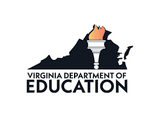
Think Critically about Art using Digital Discussions. Students develop critical thinking skills by engaging with artistic works and in describing, analyzing, interpreting, and evaluating works of self and others.
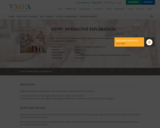
Who were the ancient Egyptians? Explore objects from ancient Egypt to discover how the Egyptians lived and what they believed in this Interactive Exploration featuring works of art from the VMFA's collection.
This resource consists of background information on Egyptian geography and climate, Egyptian life and society, role of the pharaoh, the purposes of ancient art, the role of scribes, hieroglyphics, the afterlife and mummification, Nubia (Egypt's southern neighbor), comparisons/contrasts to art from other parts of Africa, and a discussion on the legacy of Egyptian art (Egyptomania).
Woven throughout the informational narrative are several different types of looking, thinking and learning activities, all of which call on students' observation and critical thinking skills as they closely examine selected art and artifacts. Reflection questions that encourage deep thinking are featured, along with clickable popups on images that further explain Egyptian art and society. Activities like "Look At This," "What's the Story," "Be the Scribe," will bring student engagement, reflection, and critical and creative thinking to any ancient Egypt lesson!

This 5E lesson helps students understand that energy can be transformed from solar energy into mechanical, electrical, and chemical.
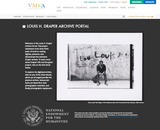
This resource presents a variety of digital resources hosted by Virginia Museum of Fine Arts that students can use to explore the life and work of renowned African-American photographer Louis Draper.

Students will explore literal equations using pictures/images to represent variables. Students use inverse operations and properties of equality to solve for the specified image.

In the engage section of the 5Elesson, students are introduced to the role of fossils as evidence of evolution and evolutionary relationships by watching a videos about the discovery of Lucy and Ardi and consider what type of information that they can gain from skull fossils. Students will then explore features of skulls from human ancestors and the modern day Homo sapien. After measuring skull to cheekbone ratios, students will create a graph to compare various species. Several interactives are provided to explain fossils, skeletal evidence for human evolution, and phylogenetic trees. Then, students will apply their skills of analyzing data about anatomical similarities and genetic information to depict evolutionary relationships between organisms using cladograms. To evaluate student understanding, students will complete an evolutionary relationships CER.
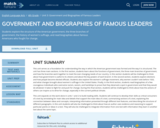
This unit serves as a foundation for understanding the way in which the American government was formed and the way it is structured. The unit has three main sections. In the first section, students learn about the functions of government, the three main branches of government, and how the branches work together to meet the ever-changing needs of our country. In this section students will be challenged to think about how government is useful to its citizens and about the key powers of each branch. In the second section, students explore elections and how people become elected officials. Students also explore the women's suffrage movement, why women couldn't vote before 1920, and what changes brought about women's suffrage in the United States. Finally, in the third section, students read biographies of a few courageous individuals who overcame racism, sexism, and hardships to prove that they deserved a spot in government and that they would do whatever it takes to fight for and push for change. During this final section, students will be challenged to think about how the actions of others can inspire us to drive for change, especially in the current political climate.
This unit expands on the work done in units 1 and 2 to build reading skills. Students will continue to develop their skills as critical consumers of a text by annotating for main idea and details that support the main idea of a text, summarizing sections of a text, explaining the connection between ideas and concepts, interpreting information presented through different text features, and describing the structure of different paragraphs. In this unit students will also be challenged to think about how an author uses evidence and reasoning to support particular points or ideas in a text. They will also be challenged to integrate information from one text with information they learn in another text about the same topic.
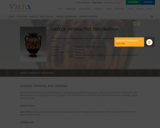
Who were the Ancient Greeks? Explore more about the Ancient Greeks and what they valued as a society in this Interactive Exploration.
This resource consists of two different types of looking, thinking and learning activities. These activities call on students' observation and critical thinking skills as they closely examine selected objects from Ancient Greece. The activities explore the themes of mythology, religion, sport, and trade.
The "Look at This" activities provide close-up views with guiding questions and background information. Students will learn more about what the ancient Greeks valued as a society.
The "Surprise Me" activities offer pop-up hot spots on selected objects to reveal intriguing information about Greek religion, gods, goddesses, trade, sport and mythology. Students will investigate how these objects relate to Greek religion and human need for protection from harm and healing from disease and injury.
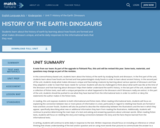
In this science/history-based unit, students learn about the history of the earth by studying fossils and dinosaurs. In the first part of the unit, students learn about how fossils are formed and how paleontologists study fossils in order to learn about ancient history. In the second part of the unit, students study what makes dinosaurs unique and fascinating creatures by learning about various species of dinosaurs and how they adapted in order to meet their basic needs for survival. Students will also be challenged to think about what earth was like at the time of the dinosaurs and how learning about dinosaurs helps them better understand the earth's history. In the last part of the unit, students read a collection of fiction texts, each with a unique perspective on what happened to the dinosaurs and if dinosaurs really are extinct. In this part of the unit, students should be pushed to use what they have learned from the informational texts in order to confirm or deny the statements the author makes in the fiction texts.
In reading, this unit exposes students to both informational and fiction texts. When reading informational texts, students will focus on explaining the connection between two or more pieces of information in a text, particularly in regard to retelling how fossils are formed or how scientists uncover fossils. Students will also be pushed to describe the relationship between the illustrations and the text in which they appear, specifically describing what new or additional information they learn from reading the illustrations. Additionally, students will continue to practice determining the main topic of a text and asking and answering questions about unknown words. When reading fiction texts, students will focus on retelling the story and making connections between the story and the facts they've learned from the informational texts.
In writing, students will continue to write daily in response to the text. Written responses should focus on including an inference or critical thinking that shows understanding of the text and/or question and on using more words than pictures to communicate the answer to a question. This unit also includes two longer writing assignments: one research writing assignment and one narrative writing assignment.
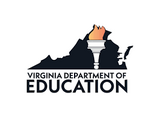
Students will learn how to analyze dance using the basic elements of dance. Students will learn the importance of recognizing bias in critique, and practice reviewing a dance performance, live or recorded, by answering a series of questions and reframing their answers into sentences that critique the show.

Artists throughout time have come to their work with stories to tell, concepts to explore, and puzzles to work out. By taking time to look at a work of art with a curious and investigative eye, students can activate creative thinking to imagine and expand on the story it presents. Use this interactive exercise to guide students as they examine a work by Roslyn Drexler, creatively document the ideas it presents to them, and consider how their thoughts connect with the artist's own ideas and intentions.

Artworks can offer an opportunity to consider creativity in places and times that may be different from our own. Spending time to look carefully at the form, imagery, texture, and patterns of a work of art can help students consider and become curious about the materials and techniques, artistic conventions, and cultural contexts of unfamiliar objects. Use this interactive exercise to guide students as they examine an Ancient American work of art, document the ideas it presents to them, and consider how their thoughts connect with what we know about the artist's own ideas and intentions.